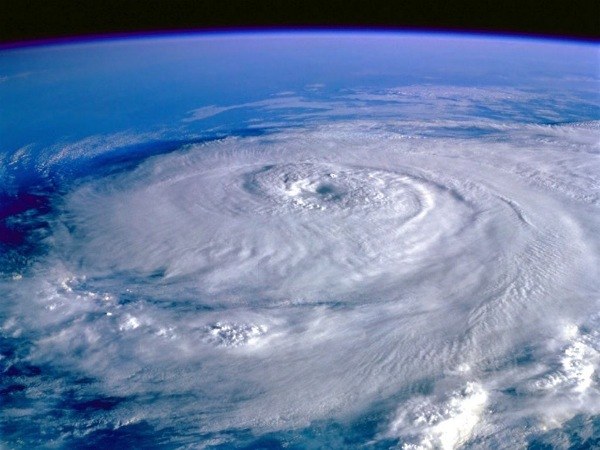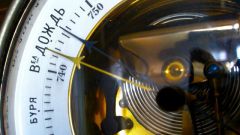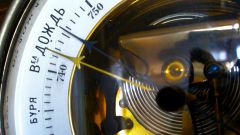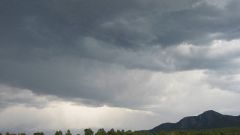The normal atmospheric pressure, it is customary to take the air pressure at sea level at latitude 45 degrees at a temperature of 0oC. In these ideal conditions, the column of air pressing on every square inch of space with the same force as a column of mercury height of 760 mm. This figure is an indication of normal atmospheric pressure.
Atmospheric pressure depends on elevation above sea level. Elevated results could differ from ideal, but they will also be regarded as the norm.
With increasing height the atmospheric pressure decreases. So, at the height of five miles the pressure will be approximately twice less, than at the bottom.
Due to the location of Moscow on a hill, the norm of the pressure are considered to be indicators 747-748 mm Hg. In St.-Petersburg normal pressure 753-755 mm Hg. This difference is due to the fact that the city on the Neva is lower in comparison with Moscow. In some districts of St. Petersburg to meet the norm of an ideal pressure of 760 mm Hg. For Vladivostok normal pressure is 761 mm Hg. And in the mountains of Tibet norm – 413 mm Hg.
Man gets used to everything. Even if the indicators are normal pressure low compared to the ideal 760 mm Hg, but are the norm for the area, people will feel comfortable.
On the health of the person affected by the sharp fluctuations in atmospheric pressure, i.e., increasing or decreasing the pressure of at least 1 mm Hg for three hours
When the pressure decreases there is a shortage of oxygen in the blood, hypoxia of the cells of the body, quickens the heartbeat. Headaches. There are difficulties with the respiratory system. Due to poor blood supply to person may disturb joint pain, numbness of the fingers.
The pressure increase leads to an overabundance of oxygen in the blood and tissues of the body. Increases the tone of blood vessels, leading to their spasm. Whereby the blood circulation of the body. You may experience blurred vision, the appearance of "flies" before the eyes, dizziness, nausea. The sharp pressure increase to large values may lead to rupture of ear drum membrane.
Atmospheric pressure depends on elevation above sea level. Elevated results could differ from ideal, but they will also be regarded as the norm.
Norms of atmospheric pressure in different regions
With increasing height the atmospheric pressure decreases. So, at the height of five miles the pressure will be approximately twice less, than at the bottom.
Due to the location of Moscow on a hill, the norm of the pressure are considered to be indicators 747-748 mm Hg. In St.-Petersburg normal pressure 753-755 mm Hg. This difference is due to the fact that the city on the Neva is lower in comparison with Moscow. In some districts of St. Petersburg to meet the norm of an ideal pressure of 760 mm Hg. For Vladivostok normal pressure is 761 mm Hg. And in the mountains of Tibet norm – 413 mm Hg.
The effects of atmospheric pressure on people
Man gets used to everything. Even if the indicators are normal pressure low compared to the ideal 760 mm Hg, but are the norm for the area, people will feel comfortable.
On the health of the person affected by the sharp fluctuations in atmospheric pressure, i.e., increasing or decreasing the pressure of at least 1 mm Hg for three hours
When the pressure decreases there is a shortage of oxygen in the blood, hypoxia of the cells of the body, quickens the heartbeat. Headaches. There are difficulties with the respiratory system. Due to poor blood supply to person may disturb joint pain, numbness of the fingers.
The pressure increase leads to an overabundance of oxygen in the blood and tissues of the body. Increases the tone of blood vessels, leading to their spasm. Whereby the blood circulation of the body. You may experience blurred vision, the appearance of "flies" before the eyes, dizziness, nausea. The sharp pressure increase to large values may lead to rupture of ear drum membrane.





